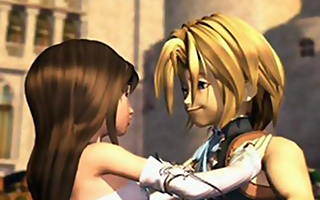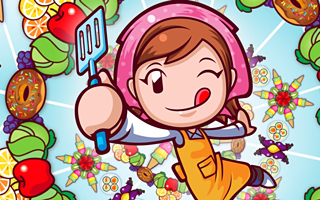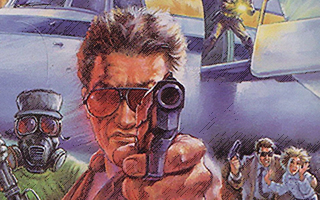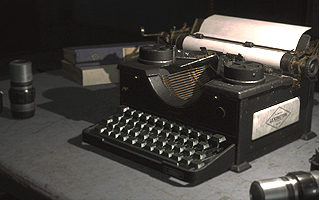Nintendo 64
Top 10 Best Nintendo 64 Games of All Time!
During the 16-bit era, Nintendo relied heavily on scaling effects and Mode 7 graphics to create pseudo-3D games like F-Zero and Super Mario Kart. (The FX chip later allowed them to utilized polygonal graphics in games like StarFox.) Nintendo initially planned to release CD-based systems with the help of Sony and Phillips, but when those deals fell through Nintendo began working on a system that promised to be significantly more powerful than anything on the market. As Nintendo’s “Project Reality” evolved into what we now know as the Nintendo 64, Sony was hard at work on the PlayStation. Sony used aggressive marketing techniques to reach a new generation of fans, but it was their third-parties relations that really gave them traction in the industry. The simple fact of the matter is that the PlayStation posed less risk for publishers than the Nintendo 64 did. The exodus of third-parties from the platform knocked Nintendo from the top of the industry, but the Nintendo 64 was home to many of the most important games of all time. Super Mario 64 instantly validated the concept of an analog thumbstick, StarFox 64 brought force feedback to the masses, and games like Mario Kart 64 and GoldenEye ushered in a golden age of local multiplayer games.
10
StarFox 64
1997

StarFox was a revolutionary title in 1993 and a significant step forward for the industry, but it was a little too ambitious for the SNES to handle. StarFox 64 was able to take the formula established by the original and expand upon it in every way. There were significant improvements to the graphics, but this is expected for a new generation of hardware. More significant were the new play mechanics. The ability to lock on to enemy fighters, for example, changed the way the game was played. There was even an element of strategy present thanks to the new scoring system. StarFox 64 also featured a new “all range” mode that allowed you to temporarily break free from the invisible rails that guide you through the levels. There were two new vehicles to control – and even though the submarine leaves a lot to be desired, the Landmaster is the coolest tank this side of Blaster Master. Also worth noting is the extra effort Nintendo put into the cinematics. In fact, roughly one third of the game’s memory is dedicated to speech. While not as innovative as the original, StarFox 64 still broke new ground. Perhaps its most significant contribution was introducing the world to Nintendo’s Rumble Pak and helping cement force feedback as an industry standard.
9
Resident Evil 2
1999

The fact that a Nintendo 64 version of Resident Evil 2 even exists is remarkable in of itself. Compressing two CD-ROMs of data onto a single 64 MB cartridge couldn’t have been easy, but Angel Studios found a way. Resident Evil 2 is widely regarded as one of the greatest survival-horror games of all time, and with good reason. The game features two characters to play as, and each has their own scenario. Upon completing the game, players will unlock an additional scenario for each character. The manner in which the scenarios are set up essentially encourages players to finish the game four times. Rest assured, gamers will actually want to play through the game multiple times. After all, who doesn’t enjoy exploring abandoned buildings, solving puzzles, and killing zombies? Resident Evil 2 features likable characters, memorable boss battles, surprising plot twists, and some of the scariest moments in the entire series. It became an instant classic when it was first released on the PlayStation in 1998, and the Nintendo 64 version was even better in several regards. Some of the enhancements include an item randomizer, new unlockable outfits, and new in-game documents for players to find. More significantly, the N64 version also featured Rumble Pak support and surround sound. No other Resident Evil games were released on the console and the entire survival-horror genre was basically neglected, so Resident Evil 2 is in a league of its own on the Nintendo 64.
8
Mario Kart 64
1997

Super Mario Kart on the SNES was a revolutionary game that single-handedly launched the kart-racing genre. What’s not to love about a weapons-based go-kart game with awesome shortcuts an emphasis on multiplayer gameplay? Mario Kart 64 followed the same basic formula and stayed true to the original in many regards. Donkey Kong and Wario replaced Donkey Kong Jr. and the lowly Koopa Troopa, but the rest of the character roster was unchanged. Most of the power-ups and weapons were carried over from the previous game as well, and a few new ones were added. The fake item blocks and the notorious blue shells have since become staples in the series. Mario Kart 64 also made several attempts to build upon the foundation of its predecessor. The paper-flat courses that Super Mario Kart was known for were replaced with three-dimensional courses filled with hills, valleys, and banked corners. Perhaps the most significant improvement made by Mario Kart 64 was the addition of four-player modes. As the first high-profile N64 game to feature four-player split-screen action, Mario Kart 64 helped define Nintendo’s vision for the console. The Battle Mode was especially fun, and “Block Fort” is still the greatest stage in the entire series.
7
Perfect Dark
2000

After waiting for nearly three years, N64 owners would finally get their hands on Rare’s follow-up to GoldenEye. Perfect Dark played exactly like its predecessor but introduced new characters, added more weapons, and expanded upon the wildly popular multiplayer mode. The typical guns, mines, and rocket launchers returned, and they were joined by remote controlled spy cams, tranquilizer crossbows, and alien sniper rifles that could shoot through walls. Additionally, every weapon in the game was also given a second function. (This means that you can now pistol whip your enemies or surprise them with a laptop gun.) The multiplayer modes had more options and were more customizable. Perhaps the biggest addition to the multiplayer was the ability to add computer-controlled bots to the death matches. The visuals were a step up from GoldenEye, but they could be described as “overly ambitious.” The quality of the textures and impressive lighting effects pushed the N64 beyond its limits which made the game difficult to play when the action heated up. This was especially evident when playing the new cooperative mode or when playing a multiplayer death match with several bots. GoldenEye was not an easy act to follow and numerous delays raised expectations even higher. While it is debatable whether Perfect Dark met those unrealistic expectations, it’s clear that it’s a well-crafted and ambitious follow up. While many games record your progress with respect to hours and minutes spent playing, Perfect Dark went a step further by recording your progress in number of days. The game literally provides hundreds of hours of entertainment and is just as addictive as GoldenEye was.
6
The Legend of Zelda: Majora’s Mask
2000

If Ocarina of Time had a three-way with Alice in Wonderland and Groundhog Day, the result would look a little something like Majora’s Mask. Although the game is built off the same engine that Ocarina used, it introduces several innovative concepts that had never been seen before or since. One of these innovations is Link’s ability to don masks in order to take the form of various creatures. This means that in addition to the traditional sword and shield play mechanics, Link can obtain the hovering abilities of a Deku Scrub, the rolling abilities of a Goron, and the advanced swimming capabilities of a Zora. The most significant innovation, though, is the game’s real-time clock. In the game, Link finds himself in a mysterious fantasy land where an evil moon is on a collision course with the planet. To make matters worse, he only has three days (72 minutes in the real world) to prevent this disaster. Fortunately, Link will learn to manipulate time and gain the ability to fast-forward or rewind the day’s events as he searches for a way to save the world. To complete his quest, it will become essential to keep track of where certain characters will be at certain times. Events will continue to take place in real-time even without Link’s involvement, and characters will stick to their own schedules as the player lives through the same three days over and over again. Majora’s Mask is relatively short for a Zelda title and only had about half as many dungeons as Ocarina did. Still, one has to admire Nintendo for having the guts to take an established franchise in such a radical new direction.
5
Banjo-Kazooie
1998

Banjo-Kazooie puts you in control of a bizarre bear who carries an obnoxious bird sidekick in his backpack, and allows you to use the abilities of both in wide variety of ways. The gameplay is remarkably deep and players are able to learn dozens of new moves as they progress. Additionally, they also have the ability to transform into a wide variety of obscure animals and items – including a walrus, a honey bee, and a pumpkin. Remarkably, the controls are completely intuitive and you never forget what combination of buttons performs which task. It’s not the ability to perform such a wide variety of moves, but the necessity to do them that makes this game so compelling. The level design is downright brilliant in how it challenges players to use every one of their abilities in order to advance through the expansive worlds. The soundtrack features interactive environmental audio and the “Teddy Bear’s Picnic meets Pirates of the Caribbean” soundtrack is a perfect fit for the game. The graphics are some of the best seen on the system, too, and the textures are especially impressive for an N64 game. The fairy tail setting and whimsical sense of humor may turn people off, but those with an open mind will find a bear of an adventure in Banjo-Kazooie.
4
Blast Corps
1997

An automated truck transporting a nuclear warhead has somehow gone off course, and it’s up to you to destroy everything in its path to prevent a disaster. In time, you’ll be bulldozing fences, side-swiping barns with a giant dump truck, and demolishing entire skyscrapers with one of three giant robots. What seems like a relatively simple action game eventually evolves into a strategy game, forcing you to switch from one vehicle to another, fill in giant potholes with slabs of concrete, and move trains and barges to make a continuous path for the runaway bomb. The variety in Blast Corps is what makes the game so fun. Whether you’re getting serious air on the surface of the moon, racing the clock in the A-Team van, or attempting to evade evil bulldozers in Pac-Man inspired mazes, the game always has something unique around the corner. Blast Corps seems like a mindless diversion at first, but it will consume your life once you get good at it. The learning curve constantly pushes you to your limit, with extra levels and new challenges continually being presented every time you think you’ve finally done it all. The requirements for the elusive Platinum Medals often border on the ridiculous, but gamers will feel compelled to meet them anyway. If you are one of the brave few that attempts to complete Blast Corps you should probably inform your loved ones first so they aren’t too surprised when they find you curled up in the fetal position, rocking back and forth screaming, “What more do they want from me!?!”
3
Super Mario 64
1996

Much in the same way that Super Mario Bros. revolutionized 2D games, Super Mario 64 was a monumental leap forward for 3D gaming. Though many were skeptical of the Nintendo 64’s unique analog thumb stick prior to the release of the console, everything became clear once they played Super Mario 64. Everything was changed in an instant and there was no looking back. The new control scheme gave Mario more abilities than ever before, and the wide variety of tasks in the massive levels provided excellent opportunities to use them. You’ll race penguins down ice slides, launch yourself out of cannons, take to the sky with a flying cap, encounter giant eels under water, lure snowballs down hills to form a giant snowman, surf around on turtle shells, get your hat stolen by a monkey, and hopefully rescue the Princess yet again. Players are given tremendous freedom with respect to how they explore the game, and the adventure is decidedly less linear than previous Mario games. Super Mario 64 basically established a new genre and shook the gaming world to its core. Few games have ever created a sense of wonder and awe like Super Mario 64 did.
2
The Legend of Zelda: Ocarina of Time
1998

Like Super Mario 64 before it, Ocarina of Time successfully captured the essence of an established 2D franchise while managing to avoid the problems associated with most 3D games. The brilliant auto jump feature keeps the game focused on adventure aspects while the intuitive battle system allows players to concentrate on their enemies rather than worrying about the camera. Even though Ocarina of Time has a completely new look and control scheme, it still feels like a Zelda game. The dungeons and puzzles are all completely new, but they perfectly mesh with the established Zelda universe. The multitude of enemies ensure that the battle system is put to good use, and the boss battles are downright spectacular. From a visual standpoint, Ocarina has a distinctively more mature look than previous Zelda games do, and the sprawling 3D environments help accentuate the overwhelming scope of the adventure. Stepping onto Hyrule field for the first time, jumping over Gerudo Valley on your horse, and confronting Ganon in the final act were all unforgettable moments in a truly timeless game.
1
GoldenEye 007
1997

GoldenEye is a genre-defining game that also helped define the Nintendo 64. Despite the advancements that have been made to first-person shooters since 1997, GoldenEye still stands as one of the most varied games in the entire genre. The levels range from wide-open fields to the confines of a train, and the multiple objectives in each stage add even more variety. You’ll find yourself hacking into computers, sneaking out of prison cells, and protecting hot Russian chicks from enemy fire. The game makes excellent use of the James Bond license and its espionage themes. Powerful assault rifles can make quick work of your foes, but they also alert more guards to your location. This means that there is always an incentive to sneak up behind people, disable cameras, or snipe guards from afar. Players can run around like Rambo if they want to, but the game rewards them for acting like a spy. The stealth elements are not forced on the player, so they are free to blow enemies up with remote mines or run over them with giant Soviet tanks if they are so inclined. GoldenEye is well-balanced and the learning curve is pretty much perfect. It will take months of practice to master the single-player campaign on the higher difficulty levels. Much has been written about how the game’s multiplayer component feels archaic in today’s online world, but there is no denying that multiplayer added years of replayability to the game. The four controller ports on the Nintendo 64 weren’t just there for decoration. Local multiplayer is fun. With the exception of Halo, GoldenEye is the most important FPS ever released on a console and more iconic than the movie it was based on.





Do you agree with this list? Let us know what you think by leaving a comment below. Your opinion matters!